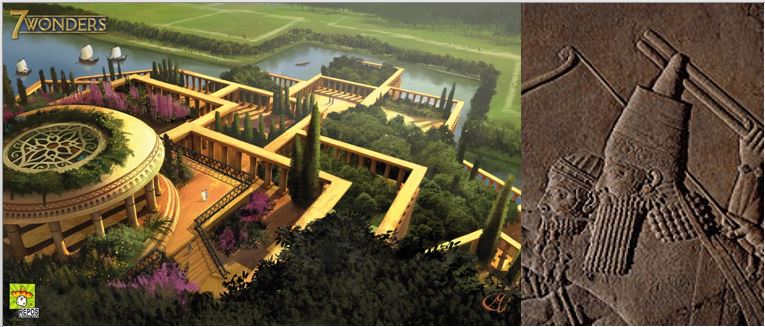
The Babylonian and Assyrian Civilisation
History

868 views
0 likes
You will need to sign in before you can comment or like.
Mesopotamia (the land between the Euphrates and Tigris rivers in what is present-day Iraq)
was the cradle of one of the world's oldest civilizations.
The Mesopotamian civilization flourished for several millennia during which it progressed
from pre- and proto-historic periods to the Bronze and Iron Ages.
It was, however, in the Bronze Age (about 2900 to 1100 BC) that the civilization went through the most dynamic phase.
First the Babylonian Empire and then the Assyrian Empire ruled the region during 1800-500 BC.
Babylon rose to prominence as a cultural and political center of the Mesopotamian civilization
during the reign of the Amorite king Hammurabi, who ruled from 1792 to 1750.
He transformed the city and the region around it from a small kingdom to a center of the world's
most powerful empire known in history as the Babylonian Empire.
Hammurabi is best known for his law codes that he established in his empire.
The Codes of Hammurabi were carved on large stone pieces and installed in different parts of the empire.
This was a model that the Mauryan emperor Ashoka would follow in India in the second century BC.
After Hammurabi, the Babylonian Empire became weak and the capital was attacked several times
by other aspiring ruling tribes and empire builders, the Assyrians being one of them.
Like the Amorites of Babylon, the Assyrians were Semitic tribesmen settled in upper Mesopotamia since around 2000 BC.
Through a long process of military conquests, they expanded their kingdom and established a powerful empire.
They captured Babylon and controlled most of Mesopotamia and extended their political control over territories
on the Mediterranean and the Red Sea coasts including Syria and Egypt.
The Assyrian Empire was the most powerful in the region during the second half of the first millennium BC.
An Assyrian king created the world's first zoo at Nimrud,
the capital of the empire in the 9th century BC.
Another Assyrian king built the world's first known library at Nineveh in the 7th century BC.
They built stone palaces and gardens. The Assyrian Empire declined after 600 BC.
Both the Babylonian and Assyrian Empires contributed immensely to the Mesopotamian civilization.
Their rulers were also knows for their encouragement to art and architecture and for their interest is flora and fauna.
They are known for their accomplishments in the fields of science, art and architecture, and literature.
Comments